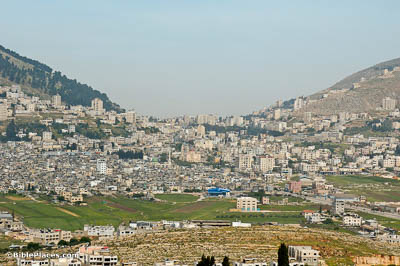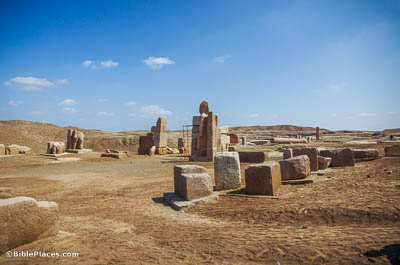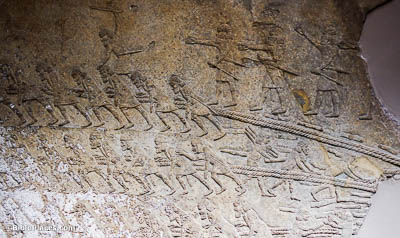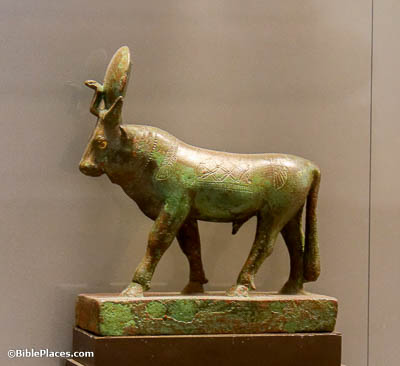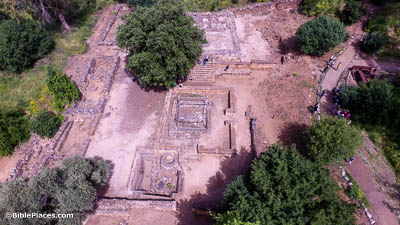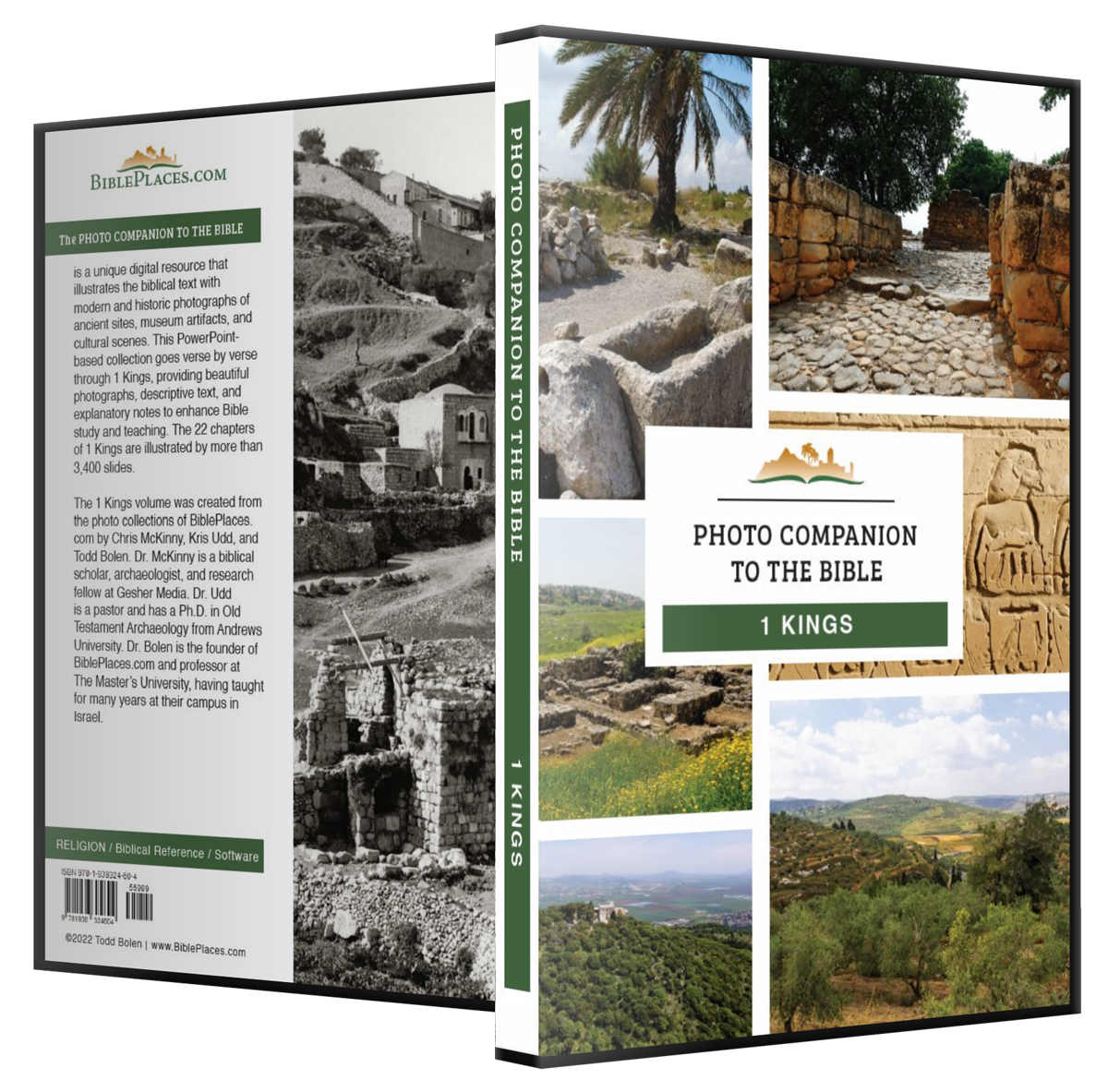Then Rehoboam went to Shechem, for all Israel came to Shechem to make him king (1 Kings 12:1).
Rehoboam traveled about 30 miles (50 km) north to Shechem on the ridge route passing by Bethel and Shiloh. The important site of Shechem was located not far from the border between the two tribes of Joseph. This photograph provides a broad view of the area to the east. The Israelite tribes had already visited this area when they recited the blessings and the curses and again near the time of Joshua’s death (Josh 8:30-35; 24:1).
